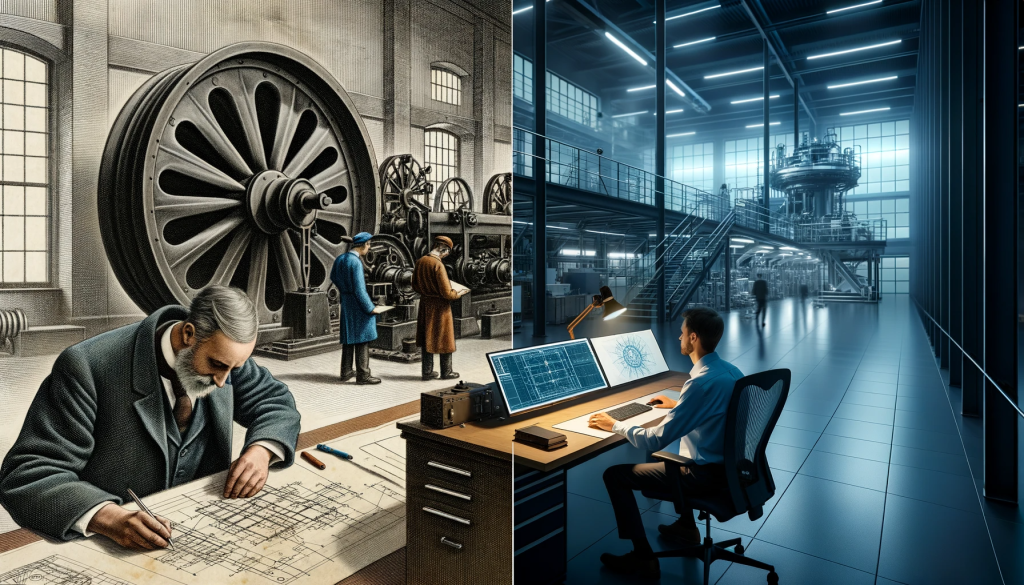Revolutionizing Engineering and Design
In the ever-evolving world of engineering and design, staying ahead of the competition and maximizing productivity is paramount. The advent of Computer-Aided Design (CAD) has transformed the industry, offering a multitude of advantages that every engineer should embrace. This article explores the capabilities and benefits of CAD, highlighting why it has become an essential tool for contemporary engineers.
I. Capabilities of CAD
In the past, engineers and designers relied on manual drawings, a labour-intensive and time-consuming process. Today, CAD systems have revolutionized the way we create and visualize products. Here’s how CAD enhances engineering capabilities:
- Efficiency: CAD simplifies the creation of 3D models and 2D drawings, drastically reducing the time required for design. Engineers can access libraries of standard parts, such as bolts and fasteners, streamlining the design process.
- Analysis: CAD systems include essential tools for finite element analysis, enabling engineers to test parts for force-bearing capabilities and dynamic loads. This ensures that products are designed to withstand real-world conditions.
- Visualization: CAD allows engineers to apply colours, view designs from various angles, and create realistic rendered images. This is invaluable for presenting products and concepts to stakeholders.
- Lean Manufacturing: CAD aligns with lean manufacturing principles, minimizing waste and maximizing productivity.
II. Advantages of CAD
CAD offers a myriad of advantages over manual drawings, making it an indispensable tool for engineers and product designers:
- Time Savings: In today’s competitive product development landscape, time is of the essence. CAD software significantly reduces design time, allowing engineers to visualize ideas quickly and create complex parts with ease.
- Increased Productivity: CAD’s efficiency translates into higher productivity. Engineers can easily modify designs, fostering design repeatability and enabling the creation of variations of the same product.
- Improved Accuracy: CAD design is known for its unparalleled accuracy, minimizing errors. Engineers can create complex shapes and surfaces with precision, ensuring that every detail is captured.
- Decreased Errors: CAD systems include features like interference checking, reducing errors in the final product. Changes in one part are automatically reflected in related components, reducing the risk of oversights.
- Better Quality: CAD enables aesthetically pleasing drawings and offers a wide range of tools for innovative solutions. Enhanced legibility and fewer errors lead to higher-quality final products.
- Ease of Understanding: CAD’s 3D models simplify product comprehension, making it easier to share designs with colleagues and non-engineers. This aids in marketing, sales, and concurrent engineering processes.
- Quick Sharing for Collaboration: CAD files are easily shared among team members, even those working remotely. The use of cloud-based CAD programs enhances accessibility and collaboration, fostering a seamless design process.
III. Computer-Aided Manufacturing (CAM)
The integration of CAD with Computer-Aided Manufacturing (CAM) expedites the transition from design to production. CAD-CAM software simplifies tool path validation for CNC machining, streamlining the manufacturing process. This automation reduces production time and cost, making CAD invaluable in the manufacturing sector.
IV. Integration with ERP
CAD’s compatibility with Enterprise Resource Planning (ERP) systems enhances overall project efficiency. ERP software streamlines project management, ensuring that less time is spent moving from raw materials to finished products. The benefits of automation, in this context, reduce manual workloads and increase innovation.
V. Choosing CAD Software
While industry giants like SolidWorks, Inventor, and Solid Edge dominate the CAD landscape, newcomers should consider free CAD software to start learning. These programs, although less flexible, provide sufficient functionality for beginners. As proficiency grows, transitioning to more advanced tools is an option.
Conclusion
In the realm of modern engineering and design, manual sketching still holds its place for initial concepts. However, the transformative power of Computer-Aided Design is undeniable. CAD has ushered in an era of efficiency, accuracy, and productivity that is simply too valuable to ignore. Embracing CAD is not just a choice; it’s a necessity for engineers and designers seeking success in the fast-paced world of product development. Swimming with the tide of CAD is the way forward for profit-seeking ventures, ensuring they stay competitive and relevant in today’s dynamic market.
